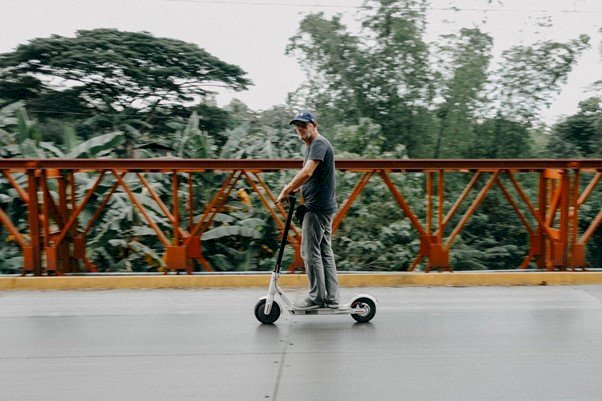Micro Mobility is the result of the evolution of citizens and their way of moving. It is in turn the search for innovation in means of transport, which is efficient but sustainable. It must be clear that this does not come to supplant everyday cars, or taxis or buses. It is more of an alternative to relieve the influx of urban areas and avoid circulatory collapse.
This type of mobility refers to smaller vehicles, which are usually lightweight and run on greener energy. The term “micro mobility” was first analyzed in 2017 by Horace Dediu. This includes PMV or Personal Mobility Vehicles, "which have one or more wheels" and "propelled by electric motors".
Which are the personal mobility vehicles?
We have already mentioned several details that give a clue to the path followed by these means of electric transport. They usually have as a characteristic that they are for a single place, that is, for one person. Although we have already seen some models of shared bicycles that use energy to boost speed. We will mention some of the most used vehicles so far:
● Bicycles fall into this category, which now, thanks to technological development, come in such a variety that the conventional model is not recognized. They are also often called pedal-assisted, since the electric motor can reach 250 W, and the maximum speed does not exceed 25 km/h.
● Skateboards or scooters, this has gained strength among the means of transportation in the last couple of years. Their maximum speed is 25 km/h and they are usually between this number and 6 km/h.
● Segways began to be used recreationally some time ago, but only now is it considered a PMV. Many professional uses have been found for it, both for outdoor spaces and for work in industrial buildings or pavilions. They have also been popularized in tourist services and some security forces.
● The scooter in general are two-wheeled motorized vehicles, but of small dimensions, between 30-37.5 cm in diameter. It can no longer be pigeonholed into a single thing since models with very different designs have appeared on the market.
These vehicles have in common that they will help reduce carbon emissions significantly. And they can also provide a mobilization alternative for those moments in which fuel is not so accessible.
Micro Mobility for healthy cities
Due to the pollution calls for attention in the last couple of years, we are finally seeing a real collective concern. According to the report of the Inter-American Development Bank, as Latin American countries modernize there will be a rise in car purchases. Which will generate more greenhouse gasses that were already high just from freight vehicles, so action will need to be taken.
Micro Mobility seeks to meet the transportation needs equitably among all citizens. As well as decongesting traffic in the most populated cities and contributing to improving air quality. Heavy-duty vehicles can't be supplanted from their rudimentary jobs, so the lighter ones will lighten up the rest of the scopes.
Challenges for PMV
This type of proposal that PMVs are joining is not a recent idea. Since the measures to include bicycles in cities have been implemented for years, not always successfully. Transportation plans, whether for mass or micro mobility, represent high investments for cities. And, unfortunately, the subsidies can barely cover one of the options, it is not enough for both.
Where will these vehicles be parked?
Whether micromobility is implemented as a public service or people have their own vehicles, certain conditions are needed. Having a parking lot where the cars are close together is not the same as having bicycles and scooters. Although they take up less space, greater security is required because they are easier to steal. In addition to places to tie them with their safety chains and that they are not at risk of falling.
They will need sidewalks with more space or wide roundabouts, so that they can be left on the street without hindering pedestrians. Because they equally deserve to have as much accessibility as those who own conventional cars. Therefore, companies or government entities that are concerned with promoting innovation must plan this carefully.
Charging zones
Because these vehicles need to recharge energy they need special places. There are countries that have already begun to implement it, including stations powered by solar energy. This should be seen as an investment that positions the city as ecologically conscious and innovative. And, contrary to what may be believed, it would not cost an exorbitant figure.
The implementation in transport fleets
Large transport companies are gradually beginning to include these small vehicles. Since they demonstrate adaptability as a company but it is also a practical way of providing the service. Drivers are not needed, so the investment is towards the PMVs. And it has the advantage that if the charging station is installed in the same headquarters of the fleet, it saves a lot.
This works as follows, motorcycles, bikes and other electric vehicles are available. People make their reservation, search for the vehicle and return it at the end of their journey. It's a matter of setting amounts according to the hours you want to spend using it. It is also extremely useful to offer it to companies that need to cover the mobility of their workers.
Move differently
One of the biggest challenges of micro mobility is getting people to accept these modes of transportation. But expectations are high due to its wonderful benefits for the planet and people. So if you have a transport company, it is time to look further, so you will be able to integrate into new technologies.






